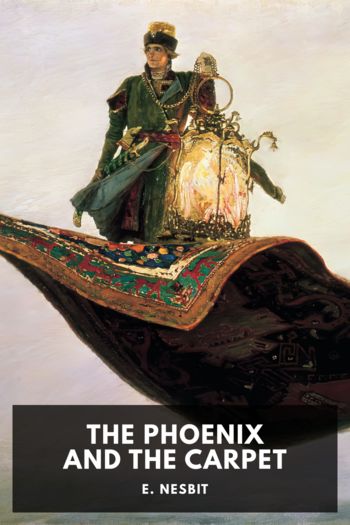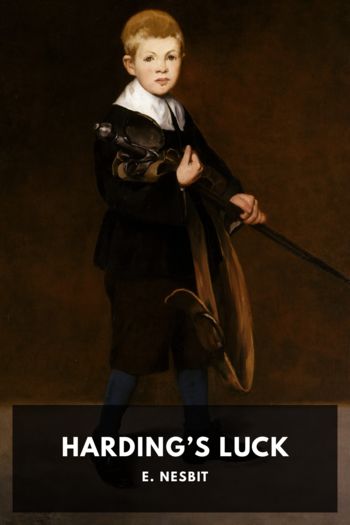The House of Arden by E. Nesbit (first ebook reader .txt) 📕

Description
Edith Nesbit was a popular children’s author of the late Victorian and early Edwardian eras in Britain. Though she was writing more than a century ago, her books nevertheless remain popular and are generally still in print.
The House of Arden was published in 1908. Like her other, perhaps better known tales, such as Five Children and It, the story takes quite ordinary children of the time and plunges them into fantastical adventures.
In this book, two children, with the interesting Saxon names of Edred and Elfrida, aged 10 and 12 respectively, discover that due to the death of a distant relative, young Edred is now Lord of Arden. The estate consists of not much more than a little money, a crumbling castle, and an attached house. An old retainer tells them of a legend regarding the Lord of Arden and a buried treasure. Naturally they are eager to locate the treasure, which may help them restore the castle. They discover a way to summon up the mascot of the House, a white mole or “mouldiwarp,” who enables them to travel back through time in search of the treasure.
Read free book «The House of Arden by E. Nesbit (first ebook reader .txt) 📕» - read online or download for free at americanlibrarybooks.com
- Author: E. Nesbit
Read book online «The House of Arden by E. Nesbit (first ebook reader .txt) 📕». Author - E. Nesbit
“Like the one who did the piece about the favourite goldfish drowned in a tub of cats,” she said pensively.
“Yes, or even Shakespeare,” said Edred; “only he’s so long always.”
“I wonder,” said the girl, “where the clock is that we’ve got to set back?”
“Oh, Mouldiwarp’ll tell us,” said the boy.
But Mouldiwarp didn’t.
When breakfast was over they went out into the grassy space round which the ruined walls of the castle rose up so grey and stately, with the wallflowers and toadflax growing out of them, and sat down among the round-faced, white-frilled daisies and told each other what they had thought, or what they thought they had thought, while they were back in those times when people were afraid of Boney.
And the castle’s sward was very green, and the daisies were very white, and the sun shone on everything very grand and golden.
And as they sat there it came over Elfrida suddenly how good a place it was and how lucky they were to be there at home at Arden, rather than in the house with the pale, smooth brass doorknocker that stood in the street with the red pavement, and the lodgers who kept all on ringing their bells—so that she said, quite without knowing she was going to say anything—
“Arden, Arden, Arden,
Lawn and castle and garden;
Daisies and grass and wallflowers gold—
Mouldiwarp, come out of the mould.”
“That’s more like poetry, that is,” said the Mouldiwarp, sitting on the green grass between the children; “more lik’n anything I’ve heard ye say yet—so ’tis. An’ now den, what is it for you dis fine day an’ all?”
It seemed in such a good temper that Elfrida asked a question that had long tried to get itself asked.
“Why,” was the question, and it was spoken to the white mole—“why do you talk like the country people do?”
“Sussex barn an’ bred,” said the mole, “but I know other talk. Sussex talks what they call ‘racy of the soil’—means ‘smells of the earth’ where I live. I can talk all sorts, though. I used to spit French once on a time, young Fitz-le-seigneur.”
“You must know lots and lots,” said Edred.
“I do,” said the mole.
“How old are you?” Edred asked, in spite of Elfrida’s warning “Hush! it’s rude.”
“ ’S old as my tongue an’ a little older’n me teeth,” said the mole, showing them.
“Ah, don’t be cross,” said Elfrida, “and such a beautiful day, too, and just when we wanted you to show us how to put back the clock and all.”
“That’s a deed, that is,” said the mole, “but you’ve not quarrelled this three days, so you can go where you please and do what you will. Only you’re in the way here if you want to stop the clock. Get up into the gate tower and look out, and when you see the great clock face, come down at once and sit on the second hand. That’ll stop it, if anything will.”
Looking out through the breezy arch among the swinging ends of ivy and the rustle and whir of pigeon wings, the children saw a very curious sight.
The green and white of grass and daisies began to swim, as it were, before their eyes. The lawn within the castle walls was all uneven because the grass had not been laid there by careful gardeners, with spirit-levels and rollers, who wanted to make a lawn, but by Nature herself, who wanted just to cover up bits of broken crockery and stone, and old birds’ nests, and all sorts of odd rubbish. And now it began to stretch itself, as though it were a live carpet, and to straighten and tighten itself till it lay perfectly flat.
And the grass seemed to be getting greener in places. And in other places there were patches of white thicker and purer than before.
“Look! look!” cried Edred; “look! the daisies are walking about!”
They were. Stiffly and steadily, like well-drilled little soldiers, the daisies were forming into twos, into fours, into companies. Looking down from the window of the gate tower it was like watching thousands of little white beads sort themselves out from among green ones.
“What are they going to do?” Edred asked, but naturally Elfrida was not able to answer.
The daisies marched very steadily, like little people who knew their business very well. They massed themselves together in regiments, in armies. On certain parts of the smooth grass certain companies of them stopped and stayed.
“They’re making a sort of pattern,” said Edred. “Look! there’s a big ring all round—a sort of pattern.”
“I should think they were!” cried Elfrida. “Look! look! It’s the clock.”
It was. On the pure green face of the lawn was an enormous circle marked by a thick line of closely packed white daisies. Within it were the figures that are on the face of a clock—all twelve of them. The hands were of white daisies, too, both the minute hand and the hand that marks the hours, and between the VI and the centre was a smaller circle, also white and of daisies—round





Comments (0)